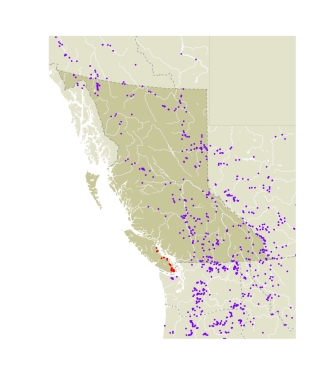Adults of the Greenish Blue are observed from late May to July, with a few records in early August. The species is assumed to be univoltine. Emmel and Emmel (1973) record several species of clovers, Trifolium spp., as larval foodplants and state that the butterfly overwinters as an immature larva. In southern BC and the adjacent USA, the Greenish Blue is often found along abandoned or infrequently used dirt roads in association with introduced clover (Trifolium pratense). In Colorado, Sharp and Parks (1973) did a mark-release-recapture study showing that the Greenish Blue did not disperse well and stayed close to the larval foodplant, Trifolium hybridum, which was also the adult nectar source. This lack of dispersion may account for the loss of Vancouver Island populations, if the native foodplant was eliminated and there were no introduced clovers nearby for the species to utilize. One reference from the early literature indicated that clovers were not the only larval foodplant for the Greenish Blue. Fletcher (1908) stated that he saw females ovipositing on flower buds of Hedysarum boreale at Kenistina, AB, on 25 July 1907. Since this plant genus is not found on Vancouver Island, either the now uncommon native Trifolium or other legumes were the larval foodplant of P.s. insulanus.
|
|
